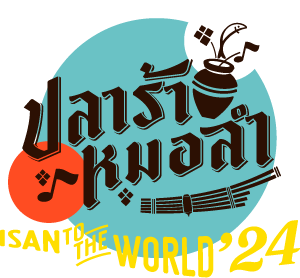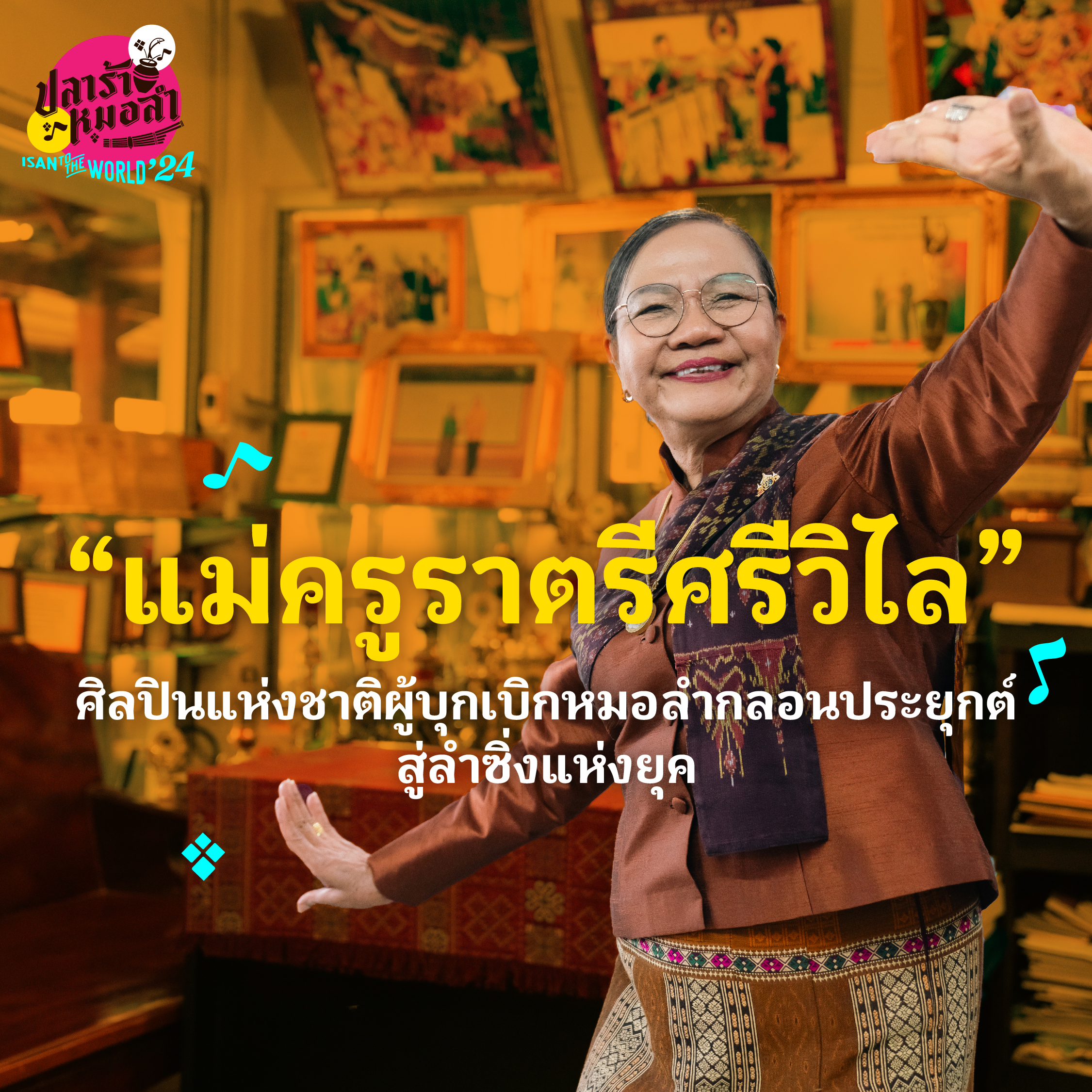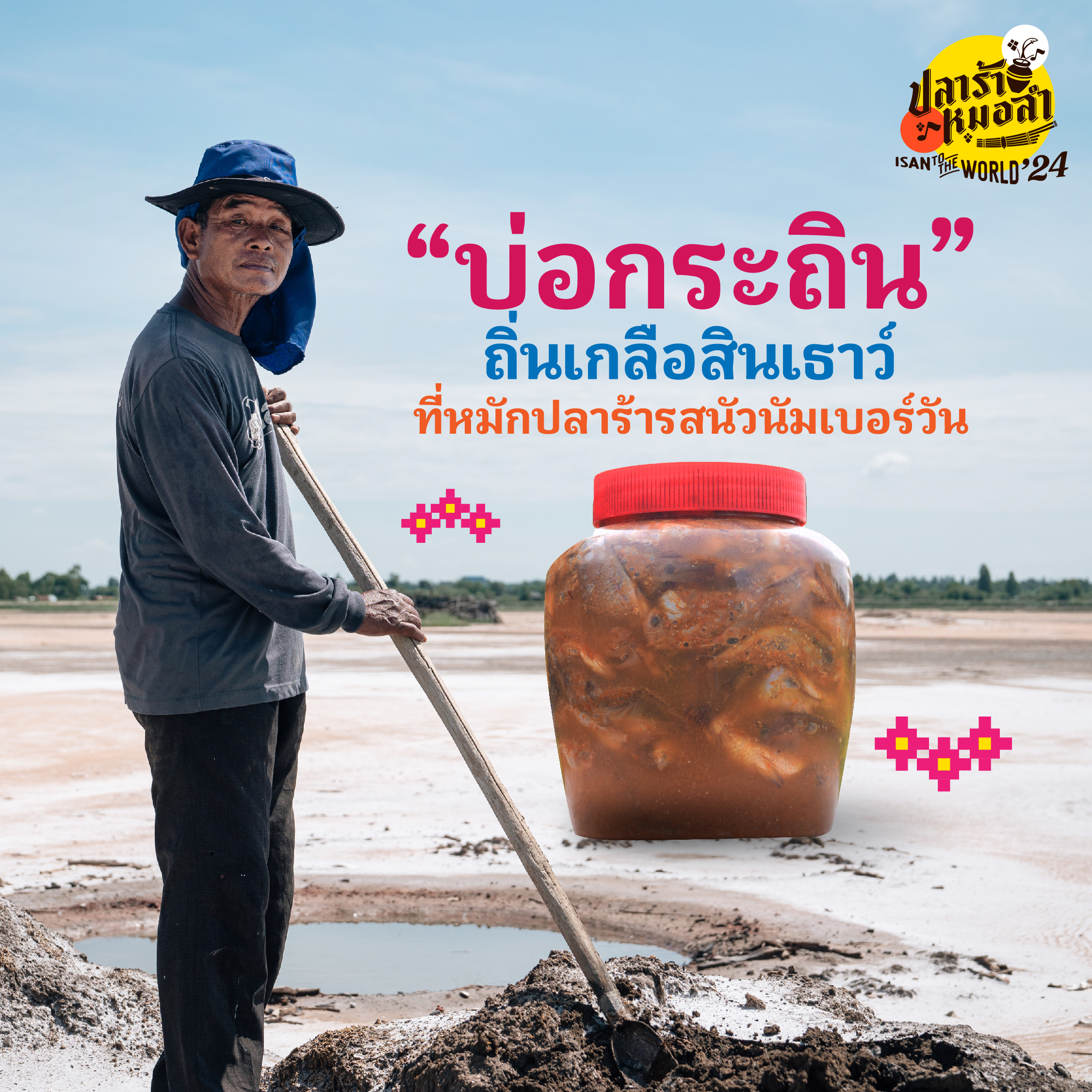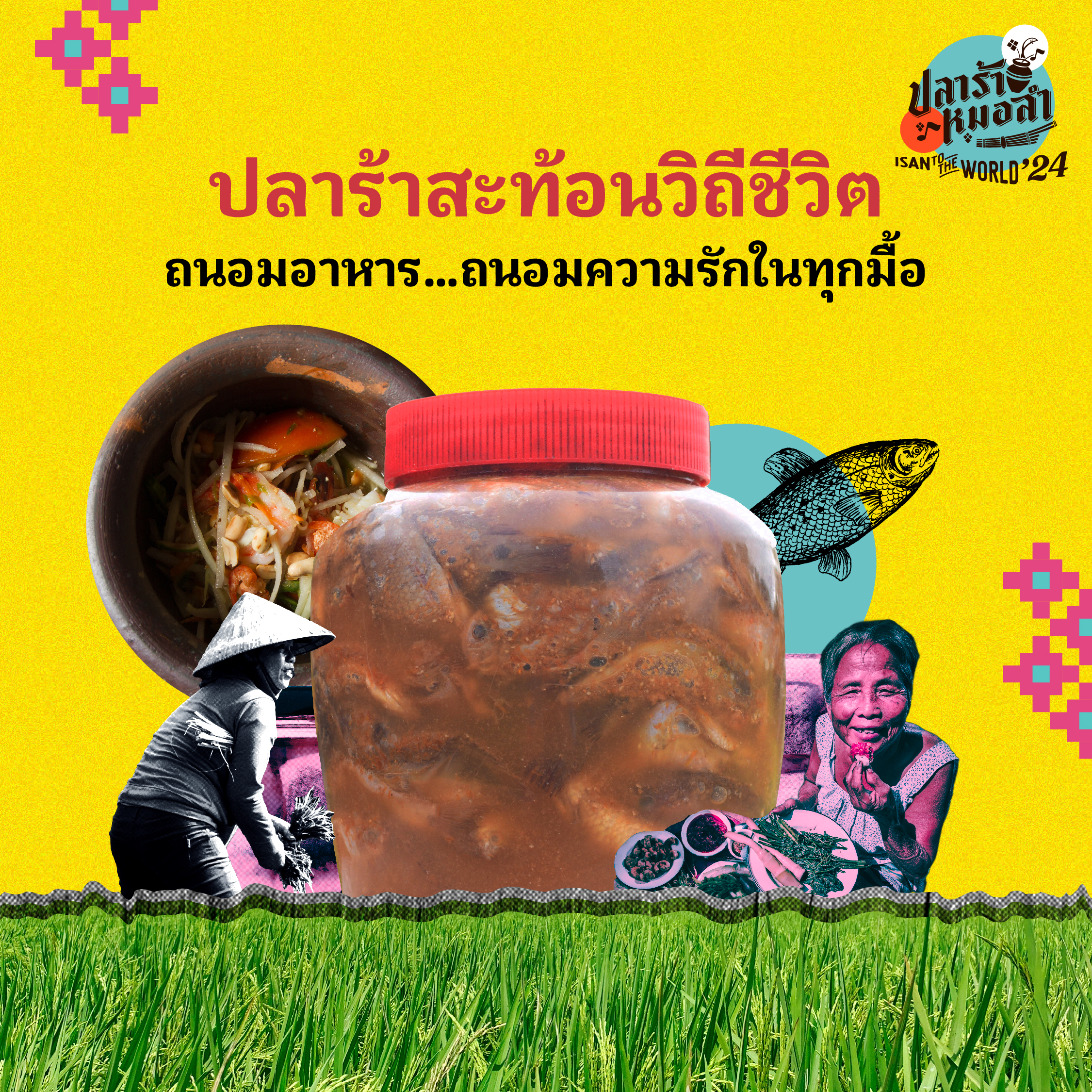The National Artist Who Pioneered the Transition of Traditional Mor Lam Klon to Modern Lam Sing
Mor Lam is the soul of life for the people of Isan, telling many stories through folk songs performed right on the ground in real homes. This is the origin story of Mae Ratree, or Mae Kru Ratree Sriwilai Bongsitthiporn, a National Artist in the Performing Arts (Adapted Mor Lam) of 2022 from Khon Kaen Province. She has been immersed in Mor Lam since she was 13 years old. Today, Mae Ratree shares her wealth of experience, offering insight into the true roots of Mor Lam, which can instantly awaken one’s sense of Isan pride upon hearing it.
“Mor Lam is a marvel of the Isan people, a simple medium that everyone can understand. The word ‘Mor’ means expert, like a healer or shaman. ‘Lam’ refers to a type of Isan performance or dance. Together, Mor Lam refers to an expert performer in Isan art. The origins are thought to come from Lam bamboo or Lam watercourses, representing something long and continuous, just like the verses in a song that must be memorized and performed from dusk till dawn without repeating a single verse. Together, these elements make a Mor Lam an expert in storytelling.”
Mae Ratree reminisces about her childhood: “I was born in the era of traditional Mor Lam, which told the stories of Isan folktales. Families would recite verses sitting on the floor, laying mats on the ground, with fire pits around. There was always someone stirring the fire to keep it going, ensuring the performers were visible. Those who stirred the fire often ended up with soot on their noses due to the smoke, but without the fire, they couldn’t see the performers.”
“From these humble beginnings, Mor Lam evolved. It began with a single performer singing throughout the night, showcasing incredible wisdom. People would listen all night. Later, it developed into Mor Lam Klon, with a male and female performing together, responding to each other in verses, accompanied by a single khaen player. Then, it expanded further into Mor Lam Reung Tor Klon, with a full cast of characters like heroes, heroines, and parents.”
As times changed, so did Mor Lam Klon: “Mor Lam Klon evolved with the introduction of music and dancers in the late 1980s. It was the era of energetic young people with jobs, their children going to school or working abroad, earning money, and investing in their hometowns. When they hired Mor Lam performers, they wanted something more exciting than just a single khaen player, leading to the rise of Adapted Mor Lam. We started calling it Adapted Mor Lam Klon, featuring two performers, four backup dancers, and a band. The audience in front of the stage ranged from middle-aged adults to teenagers, mostly young men who wanted to dance along. I adjusted the verses to be more modern, incorporating popular melodies and rhythms.”
Mae Ratree is considered a pivotal figure in making Mor Lam popular again and inspiring people to learn it as a profession. “Mor Lam Klon bookings decreased, and more people turned to Lam Sing—a modernized version of Mor Lam. I established a school, and hundreds of people come to learn every year. I started performing at 13 because both of my parents were Mor Lam artists, and they didn’t let me go to school. I devoted myself entirely to Mor Lam.” Mae Ratree’s dedication earned her a scholarship to complete her education, leading to her being known as the “Doctor of Mor Lam,” a pioneer of the adapted Mor Lam Klon.
“The charm of Mor Lam lies in its roots. Anyone can sing a song, but to truly be a Mor Lam performer, you must understand the traditional forms like O La No, Lam Toei, and both short and long verses. These are the foundations of Mor Lam, and if you don’t know them, you cannot call yourself a Mor Lam performer. The new generation struggles with this because they lack the patience required to master the long, drawn-out tones.”
“Today, no institution dictates how Mor Lam should be done. If we stop, we abandon the culture and performing arts. We must find strategies to adapt, but always preserve the roots taught to us by our ancestors.”
Mae Ratree’s greatest pride comes from the deep joy she feels in passing on her knowledge to the next generation, more than the recognition of being a pioneer in Mor Lam Klon. She has dedicated her life to Mor Lam since the age of 13, and it brings her happiness to preserve this culture for future generations. Receiving the National Artist Award has been the pinnacle of her life’s work.
Today, Mae Ratree proves to the younger generation that Mor Lam nurtures the soul, bringing joy and allowing performers to express and share stories. “I’m confident that Mor Lam will never disappear from Isan or Thailand. To those who hire us, I say, think of Mor Lam—the joy and warmth you will feel, the connection we share through the performance.”
#PlaraMorLam24
#ISANToTheWorld







